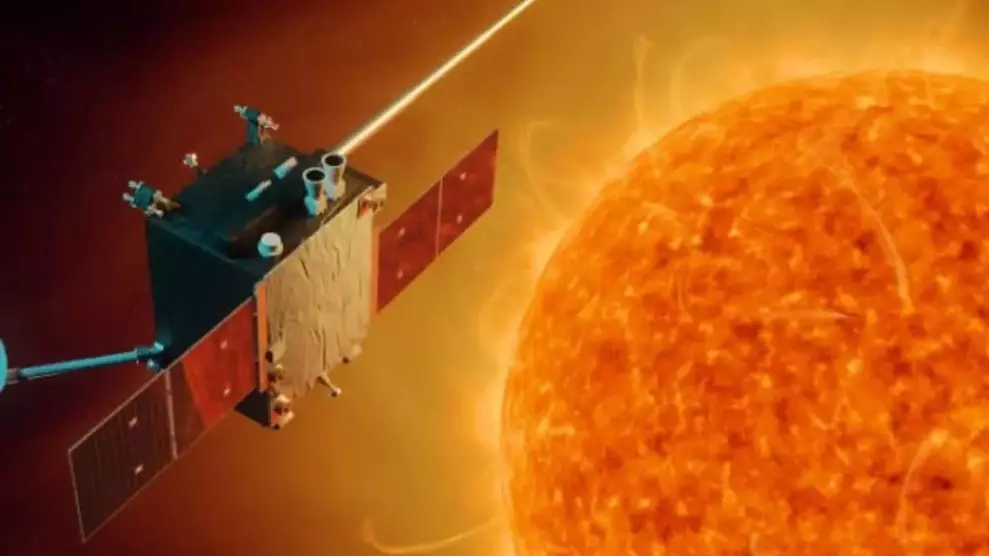
Aditya-L1 solar mission a pioneering leap to study Sun, say experts
ISRO successfully launched its maiden solar mission carrying seven payloads for a detailed study of the Sun

India’s ambitious Aditya-L1 mission marks the country’s inaugural foray into space-based solar studies and promises to provide crucial insights into the Sun’s activities and their implications for the Earth, experts say.
In a significant leap for the country’s space exploration endeavours, the Indian Space Research Organization (ISRO) on Saturday successfully launched its maiden solar mission carrying seven payloads for a detailed study of the Sun.
Several experts lauded the successful launch of the mission and its importance for science and humanity. “The mission is India’s first foray into space-based studies of the Sun. If it reaches Lagrange point L1 in space, ISRO will join the ranks of NASA and the European Space Agency as the third space agency to station a solar observatory there,” Dibyendu Nandi, head of the Centre of Excellence in Space Sciences India at the Indian Institute of Science Education and Research, Kolkata, said.
Window for predictions
The spacecraft, after travelling about 1.5 million km from the Earth over 125 days, is expected to be placed in a Halo orbit around the Lagrangian point L1, which is considered the closest to the Sun.
Central to this mission’s significance are the Lagrange points, celestial sweet spots, named after the famous French mathematician Joseph-Louis Lagrange, where gravitational forces between celestial bodies like the Sun and the Earth create a balance with the centripetal force on an artificial satellite.
“Any satellite placed near Lagrange point L1 would move in harmony with the Earth’s orbit around the Sun, providing uninterrupted observations of the Sun without being obscured by the Moon or the Earth,” Nandi told PTI.
From the Lagrangian point L1, which is a strategic vantage point for missions monitoring space weather or the Earth's space environment, Aditya-L1 aspires to unveil the enigmatic nature of the Sun. “Sun-induced changes in space weather first appear at L1 before impacting Earth, providing a small but critical window for predictions,” Nandi said.
Impact of solar storms
Prof Somak Raychaudhury, Vice-Chancellor of Ashoka University, underscores that this mission goes beyond scientific curiosity as it carries implications for the industry and society.
“While the Aditya-L1 mission primarily pursues scientific goals, its impact extends to critical aspects of industry and society,” Raychaudhury, who was previously the director of the Inter-University Centre for Astronomy and Astrophysics (IUCAA), Pune, told PTI.
“Many of these expelled high-energy particles, referred to as coronal mass ejections, collide with Earth. They pose a threat to the satellites orbiting our planet, upon which we increasingly rely for communication, internet, and GPS services,” Raychaudhury explained.
“We require a means of predicting when and with what intensity these CMEs will occur. Aditya-L1 holds the promise of providing us with the knowledge to predict space weather,” he added.
Additionally, the mission aims to comprehend how solar storms on the Sun's surface generate high-energy charged particles that can potentially damage satellites and disrupt our modern way of life. “These two issues are probably connected, and the two major instruments of Aditya-L1, the ultraviolet camera and the corona spectrograph will observe the Sun together to figure out the connection,” Raychaudhury added.
About mission’s evolution
Astrophysicist Sandip Chakrabarti reflected on the mission’s evolution over the years. “Aditya was conceptualised more than 15 years ago, initially to study plasma velocity at the base of the solar corona. Over time, it evolved into Aditya-L1 and then Aditya L1+, ultimately reverting to Aditya-L1 with a comprehensive suite of instruments,” Chakrabarti, the Director of the Indian Centre for Space Physics, Kolkata, told PTI.
Chakrabarti also offered insights into the mission’s instruments and capabilities. According to him, the payloads have been a “bit disappointing and the satellite is most certainly not a discovery class one”. Observing that it can measure velocities only at 35,000 km away from the solar surface, the scientist said the Aditya-L1 mission carries immense potential despite these challenges. “It promises to provide valuable data that will not only enhance our understanding of the Sun's dynamic behaviour but also improve our capacity to forecast space weather,” Chakrabarti said.
“While the Sun is dynamic, and the solar maximum is approaching fast, placing one such satellite will provide plenty of data to chew on for the next six years,” he noted. He, however, added that India has a long way to go to catch up with NASA in terms of science.
Nandi said scientists will have to wait about four months before they can see Aditya-L1 in action and judge the overall success of the mission.
(With agency inputs)

